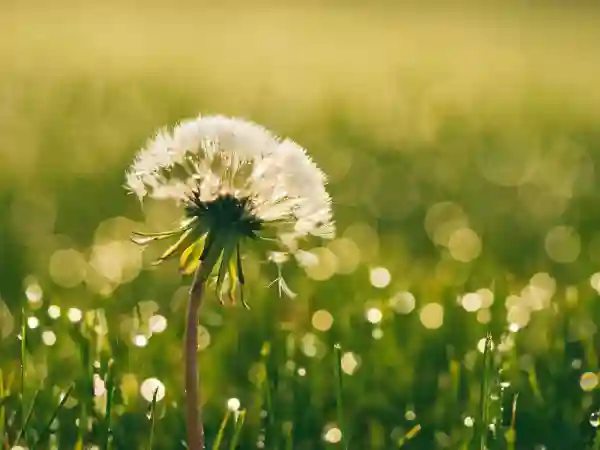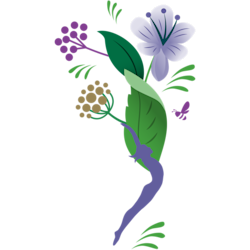

Natural remedies for hay fever
There are two camps of people when it comes to the arrival of spring and the prospect of summer: those jumping for joy, and those wishing they could jump for joy but also experience seasonal allergies like hay fever, with its irritating symptoms such as itchy eyes, nose and throat. What’s more, since pollen particles are so small, staying indoors doesn’t necessarily ensure you’re safe either, as the particles can travel great distances and end up coming through open windows and doors (plus no one wants to hide indoors on a warm, sunny day).
Why does hay fever occur?
Seasonal allergies like hay fever are frequently seen as a reflection of the change in the seasons from winter to spring. Ayurveda is an ancient Indian holistic philosophy that shows how to live a healthy, wholesome and more fulfilled life by balancing your mind, body and spirit. Ayurveda recognises that as the weather warms, so too does the body, which instigates a ‘melting’ of congestion and toxic accumulation that has formed over winter. Allergic responses like hay fever occur when the body overreacts to a trigger or allergen – in this case, pollen. The body produces a chemical, histamine, triggering the allergic reaction and the symptoms along with it.
In the case of hay fever, pollen particles contain a protein that causes inflammation, irritation and swelling of the nasal passages, as well as affecting the eyes and throat. Symptoms of hay fever usually fall under one of two groups:
Group one: sinus congestion, watery eyes, copious mucus and itchy nose
Group two: inflamed nose and mucus membranes, red and itchy eyes and ears, and headaches
These two groups are each a reflection of our current state of health. This means that those who are more prone to mucus accumulations will tend to suffer more from runny eyes and nose, whereas those who perhaps have a greater tendency towards hot, irritated and itchy skin conditions will suffer more from itchy and red eyes, ears and throat.
The symptoms of hay fever
The symptoms of hay fever can be harsh, meaning we often have to rely on pharmacy antihistamines (or sometimes stronger prescribed medication) to lessen the severity of them. While they can be effective, they can also have side effects – those that make you drowsy, reduce coordination and can cause blurred vision; non-drowsy antihistamines can cause headaches and nausea.[1]
As a result, many people are turning to more natural ways to alleviate the symptoms of hay fever, using herbs, diet and lifestyle changes. It is worth making these changes, including taking herbs, two to three months before pollen season begins as beneficial plant properties need time to take effect. Those who are susceptible and highly sensitive to hay fever may want to consider beginning in winter before any plants have the chance to bloom.
Herbal hay fever relief
Here are our herbal experts’ top recommendations for herbal heroes you can integrate into your day for support. Herbs can be added to food, sipped as a tea or taken as a supplement.
The elder tree is traditionally known as ‘nature’s medicine chest’. Bursting with brightly coloured pigments that act as natural antioxidants, elderberries are a natural source of vitamin C. Vitamin C plays an important role in allowing our immune system to communicate and co-ordinate a response. Elderflowers have traditionally been used to support the lining of the nose and throat, helping to support with sneezing. Taken as either a syrup or sipped in a herbal tea (like Pukka’s Elderberry & Echinacea tea which contains both the berry and the flower) once or twice a day, to soothe and comfort.
Aloe vera grows wild across the driest areas of the world and is famous for its ability to store moisture effectively. This is reflected in a long history of traditional use in Ayurveda, for cooling and calming hot irritated mucous membranes as well as restoring moisture. You can take three to six tablespoons a day before food or add to juices or smoothies. It’s important to buy organic aloe vera, as it doesn’t contain synthetic additives or chemical preservatives such as sodium benzoate, which can cause allergies.
Nettles
Nettles are both nutritious and cleansing, explaining why they have a long traditional use as a tonic after the winter. Modern research supports that they can be of benefit. You can make your own nettle tea by picking some tender tips, pouring boiling water over and steeping for five minutes, delicious with a slice of lemon. The spring shoots are also packed with vitamin C. Or enjoy a cup of our Radiance tea which contains nettle leaf. Pukka’s Clean Greens is a combination of 11 nutrient-dense plant super-rich greens also including nettles, which can also support.
Mushrooms are high in beta-glucan polysaccharides – natural substances that have been found to support long-term immune building, through their nourishing and strengthening effects. Certain types of mushrooms such as reishi, shiitake and maitake are especially rich in the most powerful beta-glucans. Reishi (‘the mushroom of immortality’), shiitake (‘the elixir of life’) and maitake (‘the king of the mushrooms’) are all popular mushrooms in traditional oriental cooking. A daily serving of these could be beneficial at times when we need extra support.
Eucalyptus is a refreshing and uplifting plant that is traditionally used to support and decongest the respiratory system. You can add a couple of drops of the essential oil to a bowl of hot water for a steam inhalation. Or enjoy sipping our dual action Breathe In blend, with eucalyptus and mint, to clear your senses as you inhale the vapours, while honey and ginger soothe with each sip.
A chamomile inhalation can be helpful for those suffering in high pollen season. Use 4 Three Chamomile tea bags to make up a large bowl of strong tea with boiling water. Cover with a towel and steep for a few minutes. Place your head over the bowl and under the towel and take deep breaths through your nose and mouth for 5 minutes. This allows the steam to reach your lungs, providing relief and helping to decongest.
Hay fever and the doshas
Since all of us have a different dosha (or mind body type), hay fever symptoms will also differ from person to person.
Vata types (or those with aggravated vata) are more prone to symptoms like wheezing, sneezing, headaches and dryness of the mouth and throat.
Pitta types (or those with aggravated pitta) often experience more eye irritation, with burning, inflammation and a sore throat, with the potential for fever and hives too.
Kapha types (or those with aggravated kapha) experience more congestion, with runny noses, sinus infections and itching, along with feelings of heaviness.
Since symptoms vary according to the dosha involved, following the right diet for your dosha (or dosha imbalance) can be very helpful.
Other diet and lifestyle tips for all to help ease hay fever symptoms
For 3-5 days drink plenty of hot water with grated fresh ginger. Ginger supports digestion as well as our immunity, the lungs and respiratory system and may help to clear congestion
Favour foods that are warm and nourishing but easy to digest such as soups, grains and leafy green vegetables.
Avoid substances which are mucus-producing such as dairy products, wheat and sugar.
Minimise the time you spend outside on high pollen count days.
Keep windows closed at night when you sleep.
Wash your face and hands after being outside.
Dry laundry inside on a high pollen count days.
Use a saline nasal spray to rinse out your sinuses, at least twice a day.
By incorporating some of these herbs into your routine both in the run-up to spring, and even during peak hay fever season, you can help to put the spring back in your step.

Author: Saf Hareshe
Herbal Education Specialist
Saf is a qualified Nutritional Therapist from the College of Naturopathic Medicine and runs a private clinical practice specialising in digestive health. She delivers herbal education both internally at Pukka and externally to our partners and practitioners and is passionate about making herbs and nutrition exciting and accessible for all.
Years of experience
1 year
Professional registrations
DipCNM, mANP, mGNC
Qualifications
Qualified nutritionist (College of Naturopathic Medicine, 2021)
